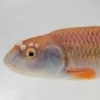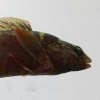Hello all,
I'm new to this forum, so if I'm doing stuff wrong just let me know, mods. I'm a first-year Biology student at my university, and I'm looking for topics for an undergrad research project. My primary interest is freshwater ecosystems, and I have a pretty solid background in aquaria. Naturally, my idea for this project is to create a captive-breeding & research program for an endangered species of fish. I'm currently researching what the best candidates would be; I've got plenty of fish from Asia (mainly Betta species) but would appreciate some feedback from you guys on natives!
So, what are some North American fish that are particularly threatened/understudied, and can benefit from ex-situ research and conservation?
So far my biggest candidates from NA are the Spring Pygmy Sunfish (Elassoma alabamae) and the Blackbanded Sunfish (Enneacanthus chaetodon).
Thanks!














